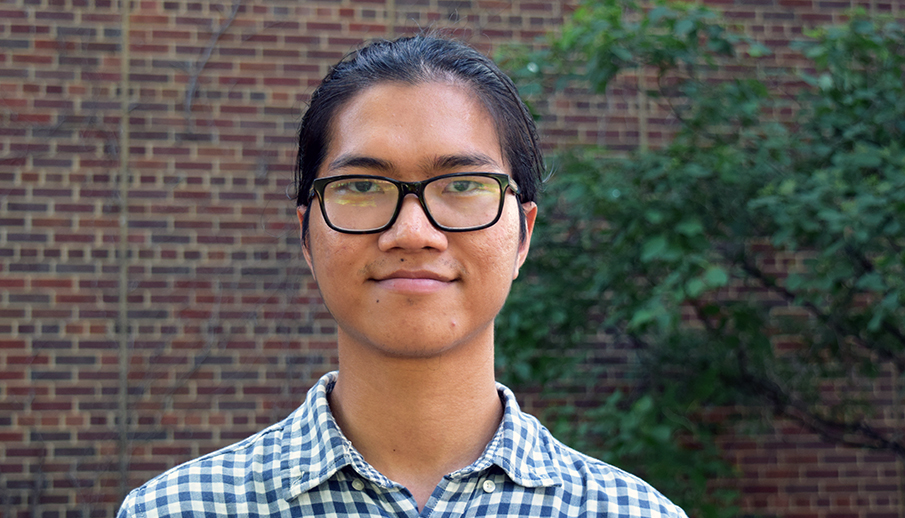
Peter Sang is a teaching candidate in second language education who experienced the education system as an immigrant and wants to support immigrant students as an ESL teacher.
When did you realize you wanted to be a teacher?
By the beginning of my junior year in college, I had taken courses in sociology and educational studies which helped me see the inequities and injustices around me. Developing that critical consciousness and wanting to make the world a little better compelled me to become a teacher.
What did you hope to get out the M.Ed. and initial teaching license program?
I hope to help my students better understand themselves and the world around them so that they can go on to make changes that the world desperately needs.
Were there any surprises and challenges along the way?
As someone who grew up outside of the U.S., navigating the American public education system has been one of the most challenging aspects of the program. I remember walking into an elementary school on my first day of student teaching and realizing how clueless I was. I had never heard of “carpet time” or “independent reading time.” I grew up in Burma where starting elementary school, students just sit in rows and listen to lectures or copy what’s written on the board. I had doubts about whether I could be an effective teacher if I had not had a similar educational experience as my students.
What has been your experience with the faculty?
The professors in the program are among the best teachers I have had. They’re approachable, well-prepared, and responsive to feedback. Many professors I have had in my undergrad are great researchers but don’t have good pedagogy. The professors in the SLE program are well-versed not only in their respective fields of research but also in effective pedagogical techniques and strategies.
How have you felt about the cohort model and experience?
The support and comradery I’ve had in the cohort has played a major factor in my successful completion of the program. From things like getting reminders in our Facebook group about assignments, to carpooling to my student-teaching site to working on an assignment as a group, the cohort model really enriched my experience and made my life so much easier.
Has the student teaching helped you feel prepared to enter your own classroom?
A year ago, when I started the program, I had no idea what it means to be an ESL teacher in the United States. Now that I’ve student-taught both at an elementary school and at a high school, I know exactly what I’m getting myself into. Especially as someone who is new to the K-12 system in the US, the student-teaching not only prepared me for the content-area skills I need in the classroom, but also helped me familiarize with the culture of public schools – such as being comfortable with using my last name with my students and interacting with colleagues and administrators.
What do you hope to do after graduation?
My goal is to teach at a public school in Saint Paul with a strong immigrant population from Burma. I hope to keep in touch with my professors and my classmates because they’re the ones who can understand what I’ll be going through and whom I know I can rely on.
Any other thoughts you want to share about your experience?
As an international student from a developing country, there are many barriers that I had to face especially with regards to financial aid and immigration. The support and guidance I’ve received from the professors and staff have made such a difference in overcoming those challenges.
Learn more about the M.Ed. and initial teaching license program in second language education.



